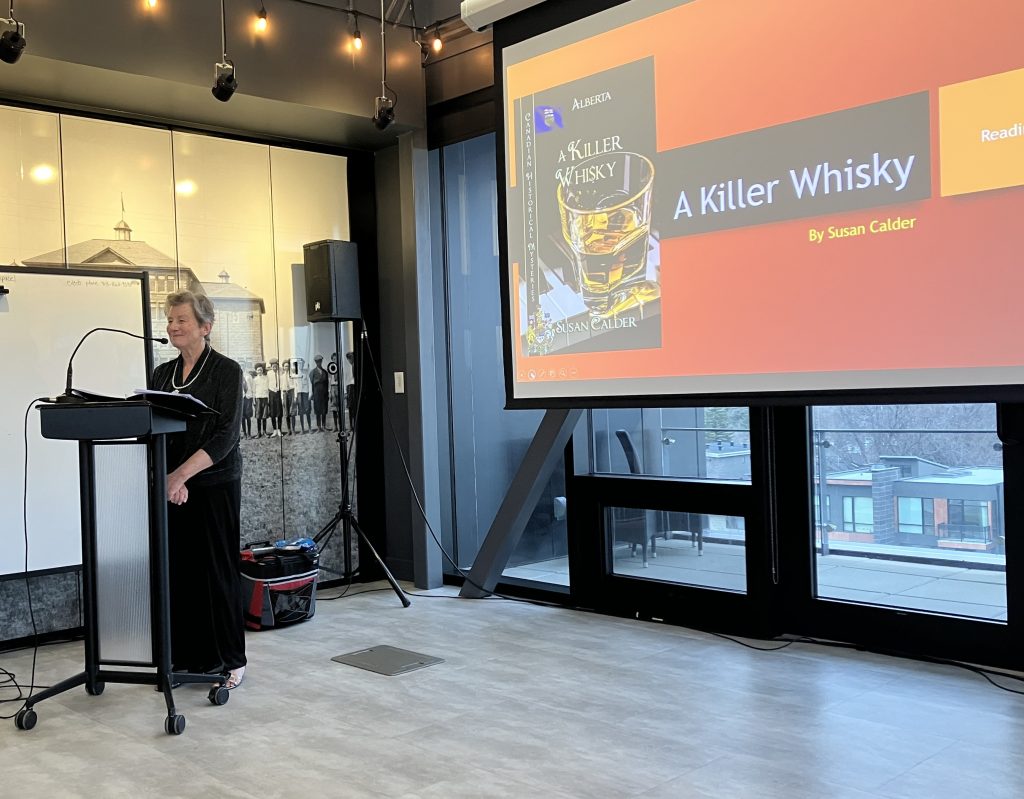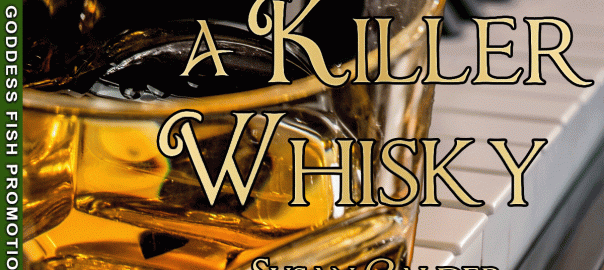My BWL blog post today comes from my recent experience of organizing my children’s books and re-reading some classics. Enjoy! https://bwlauthors.blogspot.com/


My BWL blog post today comes from my recent experience of organizing my children’s books and re-reading some classics. Enjoy! https://bwlauthors.blogspot.com/


I enjoyed my book launch for my new novel, A Killer Whisky, on Tuesday night. The weather co-operated with relatively mild temperatures and a hint of sunshine. Views from the Treehouse at cSPACE Marda Loop were lovely. It was especially great to see so many smiling, supportive faces and chat with newcomers and friends.

As part of the festivities, we offered “wee drams” of whisky and whisky cocktails named for some of A Killer Whisky’s characters. The most popular cocktail was “Katharine’s Patriotic Canadian Maple Whisky Sour.” Here’s the simple recipe:
Ingredients – yields one serving
1.5 oz whisky
1 oz lemon juice
2-4 teaspoons maple syrup
Pinch of ground cinnamon (optional)
Instructions
Fill a cocktail shaker or mason jar about 2/3 full with ice.
Add whisky, lemon juice, maple syrup, pinch of cinnamon.
Securely fasten the lid and shake well.
Pour ice into cocktail glass.
Add maple whisky sour mixture.
Enjoy!
This was my favourite cocktail, too, but I refrained from drinking at the launch to stay alert for my discussion of how I came to write A Killer Whisky and the history that forms a backdrop to the story.

My friend and Calgary literary historian, Shaun Hunter, did a fabulous job of hosting the event. Another friend and writer Leslie Gavel kept the slide show moving smoothly. Judith from Owl’s Nest Bookstore created a fine display of my six novels.

Most people seemed to go home feeling satisfied and enthused with the event. I couldn’t ask for better launch my novel, A Killer Whisky.

On today’s virtual book tour, A Killer Whisky visits “Archaeolibrarian–I Dig Books” https://archaeolibrarian.wixsite.com/website/post/review-giveaway-a-killer-whisky-alberta-canadian-historical-mysteries-by-susan-calder Leave a comment on the site for a chance to win the giveaway prize donated by BWL Publishers.
Only one more day to go on my blog tour. Hard to believe it’s almost over.

Today I have two blog stops: Dawn’s Reading Nook https://dawnsreadingnook.blogspot.com/?zx=421cc8dee075e536 and Westveil Publishing Westveil Publishing – Jenna Rideout | Illustrator, Book Reviewer, Author, and I’m heading out with my hiking group for a two-hour walk in Griffiths Woods this morning. How do I find the time?

Today’s whirlwind blog tour takes me to Fabulous and Brunette blogspot. https://fabulousandbrunette.blogspot.com/ If you make a comment you have a chance to win a prize donated by BWL Publishing Inc.

I love the title of this blog – check out “Guatemala Paula Loves to Read.” https://guatemalapaula.blogspot.com/2025/02/blurb-blitz-giveaway-killer-whisky.html

I am busy today on my blitz tour, visiting two readers’ blog websites: Gina Rae Mitchell and Long and Short Review. You can check out either one or both. https://ginaraemitchell.com/killer-whisky/?like_actor=16376877&like_hmac=a1fed9d05250771e32ad4a374ee25203&postid=63371&commentid=47384&like=1&source=sub_email and A Killer Whisky by Susan Calder – Spotlight and Giveaway

If you missed the first day of my blog tour – and even if you didn’t – you can check out the second readers’ website that is hosting my tour. https://fuonlyknew.com/2025/02/25/a-killer-whisky-by-susan-calder-peek-inside-and-giveaway/?fbclid=IwY2xjawIqtHlleHRuA2FlbQIxMQABHWH76sTf8KtOpejS9CLlTzks1zqi0L4tY3EcvEZZKu0F4dZ3OYIbe62SHw_aem_cnRxQHXw2PNMD9P8dARpwQ&subscribe=already#subscribe-blog-blog_subscription-3 I’ve tried posting some comments but don’t see them on the site yet. Maybe they are screened first. I’m still learning the ropes of doing this.

I’m starting a blitz blog tour today. I’ll be visiting different blog sites every day until March 7. You can check them out and leave a comment for a chance to win an Amazon/Barnes and Noble gift card. Here’s the link for my first blog visit. https://joanneguidoccio.com/2025/02/24/blurb-blitz-a-killer-whiskey/#comments